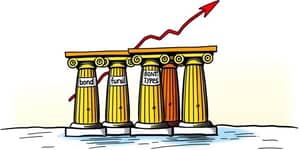Smart Spending means using your money intentionally by leveraging technology, real-time data, and clear priorities to get the greatest value from every dollar. This approach applies whether you’re managing a household budget, growing a business, or optimizing a marketing campaign.
In 2025, economic headwinds and inflation have made value paramount. With global digital ad spends expected to top $740 billion and an average tech investment of $8,800 per employee, assumptions and broad budgets no longer suffice. Consumers and businesses alike demand precision and accountability.
The Smart Spending Mindset: Intentionality Over Impulse
Adopting a smart spending mindset requires a shift from guesswork to data-driven decisions. Instead of relying on historical trends or gut feelings, you harness real-time insights and predictive analytics to guide every purchase and investment.
By comparing traditional and smart spending side by side, the contrast is clear: one relies on broad assumptions, the other adapts instantly to what works.
Key Strategies for Personal and Business Finance
Whether you’re balancing household expenses or steering corporate budgets, these proven methods ensure lower costs and higher lifetime value from every dollar spent.
- Track Everything: Maintain a complete view of all income, expenses, and debts, including minor recurring costs that quickly add up.
- Set SMART Financial Goals: Define Specific, Measurable, Achievable, Relevant, and Timely objectives such as “Save $5,000 for an emergency fund by December 2025.”
- Budget with Purpose: Apply rules like the 50/30/20 allocation—50% needs, 30% wants, 20% savings—and use apps for visibility and discipline.
- Automate Good Habits: Schedule automatic transfers to savings, investments, or debt payments to build momentum even with small amounts.
- Leverage AI and Tech: Utilize platforms offering dynamic ad placement, spending analytics, and AI-driven cash-back tools for real-time optimization.
- Optimize Recurring Costs: Regularly audit and cancel unused subscriptions or redundant services to reclaim hundreds in wasted fees.
- Prioritize Emergency Funds and Debt: Aim for 3–6 months of living expenses saved and tackle high-interest obligations first.
- Invest for Future Security: Allocate at least 15% of income to retirement accounts and maximize employer matches when available.
Businesses can apply these same principles by auditing software usage, reallocating tech budgets, and focusing on high-impact marketing channels that yield the best ROI.
Consumer Behavior and Industry Trends in 2025
Today’s consumers are more value-driven than ever. Shoppers weigh quality, price, and ethical considerations before purchasing. Personalized cash-back offers and loyalty rewards resonate strongly, driving higher engagement and retention.
Brands are leaning heavily on first-party data and predictive analytics to deliver relevant messages while respecting privacy. Relationship-building and privacy compliance have become competitive advantages in an era of heightened consumer awareness.
Practical Steps to Implement Smart Spending
Turning strategy into action is straightforward when you follow a clear plan. Start small, build habits, and scale up as you see results.
- Know Your Numbers: Gather pay stubs, bank statements, and credit card records to track every dollar.
- List All Obligations: Identify fixed, variable, and hidden costs—including subscriptions, fees, and services.
- Break Large Goals into Steps: Create micro-goals like saving $100 per month to build confidence.
- Align Spending with Values: Regularly reassess purchases to ensure they reflect your priorities.
- Review and Update Quarterly: Life changes. Adjust budgets, goals, and investments at least every three months.
By following these steps, you create a living financial plan that adapts as your circumstances evolve. Micro-goals foster consistent progress, while quarterly reviews keep you on track.
Future-Proofing Your Financial Health
Preparing for tomorrow means balancing short-term needs with long-term aspirations. Maintain an emergency fund, reduce high-interest debt, and commit a portion of earnings to retirement or investment accounts.
Dynamic budget shifts enabled by AI-driven tools can help you respond immediately to new opportunities or unexpected challenges. Regular audits of expenses and performance analytics ensure you reallocate resources where they matter most.
As you embrace smart spending, remember budgeting isn’t about restricting your life—it’s about empowering you to invest in what truly matters. By maximizing every dollar today, you build resilience, achieve your goals, and craft a future defined by choice rather than circumstance.
References
- https://www.valueleaf.com/blog/ad-game-are-your-ad-spends-smart-and-roi-focused-enough/
- https://www.affinityfcu.com/financial-wellbeing/blog/financial-wellbeing/5-steps-for-creating-a-budget-that-sticks-in-2025
- https://www.hbc.bank/smart-money-moves-for-2025/
- https://www.quicken.com/blog/10-newyears-budgeting-tips/
- https://business.rakuten.com/the-q1-2025-playbook-insights-strategies-to-win-in-a-complex-retail-landscape/
- https://www.thepeoples.com/personal/2025-financial-planning
- https://chcollective.com/smart-spending-strategies-for-health-centers-in-2025/
- https://www.westernsouthern.com/personal-finance/how-to-plan-your-finances










